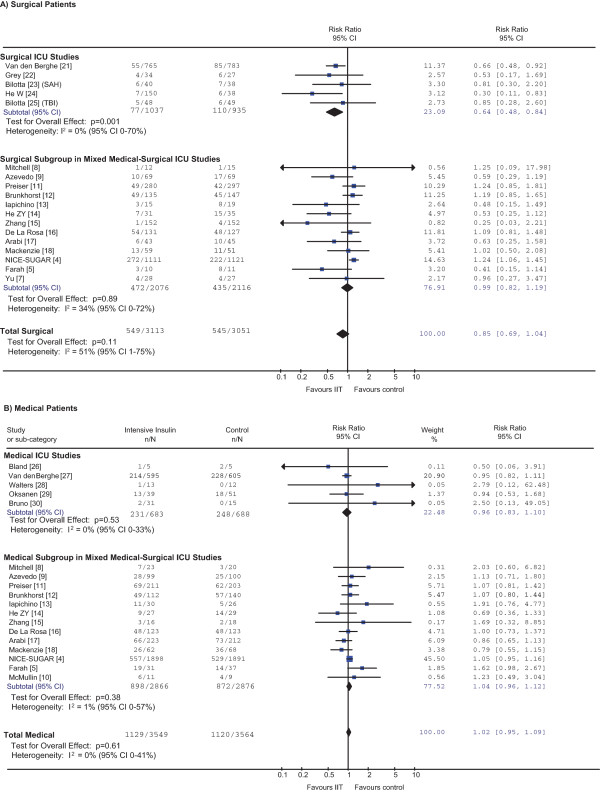Figure 1.
Effect of intensive insulin therapy on mortality in surgical and medical patients. A z test of interaction between the risk ratio (RR) for mortality in (A) all surgical patients and (B) all medical patients was not statistically significant (P = 0.10), indicating that treatment effects did not differ between these two groups. This was also the case if one compares medical and surgical patients only within the same - that is, mixed intensive care unit (ICU) - trials (P = 0.66). Of the 14 trials conducted in mixed ICUs [4,5,7-18], one enrolled only surgical patients [7] and one enrolled only medical patients [10]. Preiser and colleagues' article [11] is the full publication of the abstract included in the most recent review [2]. After accounting for readmissions, subgroup-specific outcomes data were available for 991 out of 1,078 patients randomized. Compared with data presented in the most recent systematic review [2], subgroup-specific outcomes data are complete for all other trials except for 1/535 patients with missing data in one trial [12]. CI, confidence interval; I2, percentage of total variation across studies due to between-study heterogeneity rather than chance; IIT, intensive insulin therapy; n/N = number of deaths/number of patients randomized; SAH, subarachnoid hemorrhage; TBI, traumatic brain injury.

